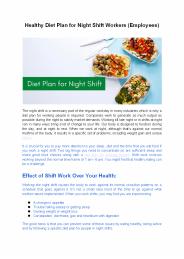To shift or not to shift? - PowerPoint PPT Presentation
1 / 8
Title:
To shift or not to shift?
Description:
To shift or not to shift? Towards an Urban Demand Response. AU Smart Cities Internal Symposium. Godsbanen, Remisen, Aarhus. Expansions: Comparison of cost ... – PowerPoint PPT presentation
Number of Views:90
Avg rating:3.0/5.0
Title: To shift or not to shift?
1
To shift or not to shift?
Towards an Urban Demand Response
AU Smart Cities Internal Symposium Godsbanen,
Remisen, Aarhus
2
RES Integration
3
The SEMIAH motivation
- Demand response potentials
- Residential electricity consumption breakdown in
the EU-27
- The operation of wet appliances can be shifted in
time without affecting user comfort. - Postponing the operation of a heat pump for a
small amount of time (up to 30 min.) does not
affect the comfort but creates a considerable
amount of flexibility. - The operation of a micro CHP plant can be shifted
in the same manner as the heat pump (shifting
operation in time operate at partial output
e.g., 70 or full power). - Hot water boilers represents an energy buffer,
which provide flexibility to the overall power
system.
Up to 40 of household electricity consumption
can be shifted
An aggregated demand response need many small
contributions of flexibility
(Source Eurostat)
4
The SEMIAH system
But most people confuse the concept of energy
shifting with energy reduction!
5
LOAD SCHEDULING OF THE DEMAND RESPONSE
SYSTEM (DRS)
LOAD SCHEDULING OF THE DEMAND RESPONSE
SYSTEM (DRS)
Household scenarios
Scheduler
Household scenarios
Scheduler
Input
Input
Output
Output
Demand peak flattening can be observed from the
aggregation and shifting of appliance loads in
100 residential households.
Demand peak flattening can be observed from the
aggregation and shifting of appliance loads in
100 residential households.
The DRS utilizes a centralized back-end service
to control electricity loads of home appliances.
The scheduling algorithm concerns the
shiftability and interruptability of loads. A
single-objective optimization technique is
employed by using a cost metric that combines
CO2 emission and the electricity cost. The
algorithm runs continuously in time. A Knapsack
approach is used to define the set of appliances
to run in the next time interval.
The DRS utilizes a centralized back-end service
to control electricity loads of home appliances.
The scheduling algorithm concerns the
shiftability and interruptability of loads. A
single-objective optimization technique is
employed by using a cost metric that combines
CO2 emission and the electricity cost. The
algorithm runs continuously in time. A Knapsack
approach is used to define the set of appliances
to run in the next time interval.
6
AN interdisciplinary research experiment
Grundfos Dormitory Living Lab
12 Floors 159 Apartments (40 m2)
7
Summary outlook
- There is a need to adapt the electricity
consumption side to cope with the fluctuations in
generation from renewable energy sources (wind
and PV). - ICT can be utilized as a cost-effective way to
exploit flexibilities in consumption through
Demand Response programs - The European research FP7 project SEMIAH
investigates scalable demand response in
residential households - The ForskEL project VPP4SGR looks at the
integration of building automation using a
combination of direct and in-direct electricity
load control - Key challenges in demand response research user
involvement, scalability, quality of a demand
response, new business models trading
flexibility.
8
(No Transcript)































